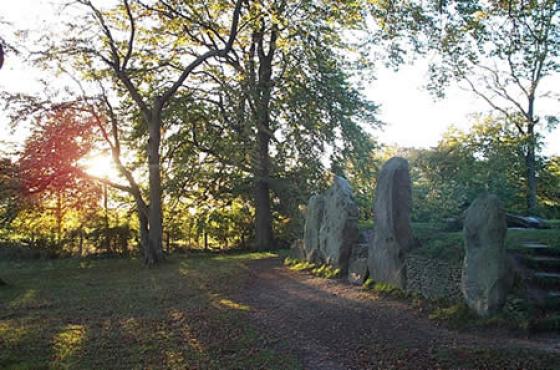Jane, I like your “Artist at Wayland’s” image. I was about to pull your leg about the fact that the artist was painting a different scene, until I realized it was Wayland’s from further away and you’d done it entirely deliberately. You should call it Pratcatcher.
I was very interested by your mention of a possible deliberate optical illusion along the sides. Do you have any more details? The only comparable bit of Neolithic trickery I know of is the alleged entasis in the Stonehenge uprights, reminiscent of the columns of the Parthenon. Coincidentally, what you’re talking about at Wayland’s, if it exists, is reminiscent of another trick on the Parthenon, the bulging along the sides. More significantly, perhaps, I’ve just come across a diagram of the original ditches to each side of West Kennet LB. If the diagram is right it really looks like a deliberate slight curve was built in.
http://www.mysteriousbritain.co.uk/majorsites/aa/westkennet_longbarrow.html
Does anyone know of any other examples? I’m sure there’s lots of evidence of “placement” optical illusions, at least, eg the Silbury thing, and Stukeley said of Hakpen Hill that it “and others are set with great art not upon the very highest part of the hills but upon so much of the declivity or edge as they make appearance as above to those in the valley”. But what about illusions built into the structures?
